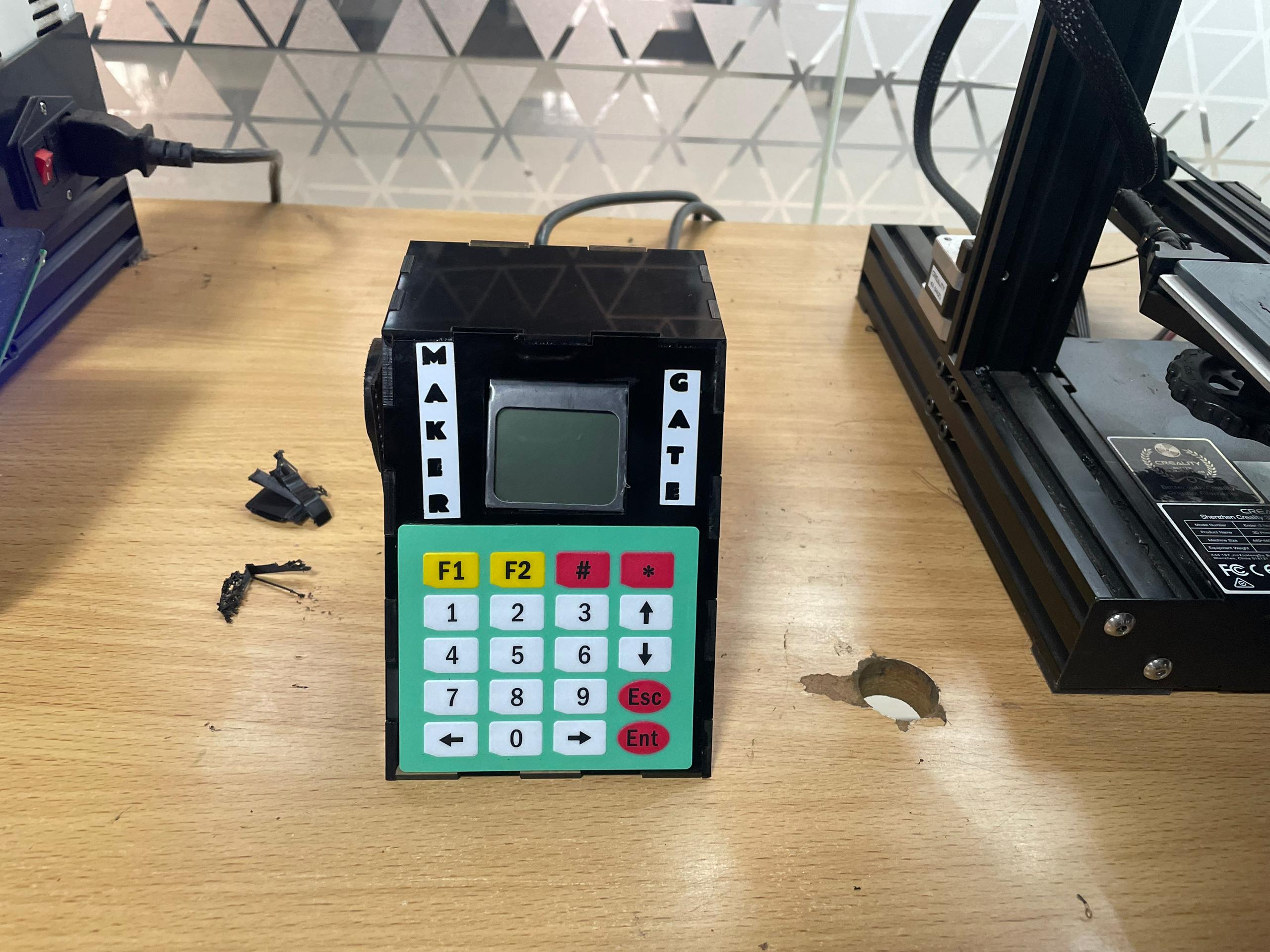This week I had to really think through my final project and answer all these questions about what I'm actually building. It was harder than I thought to be this specific about everything!
- What will it actually do?
- Who's already tried something like this?
- Where am I getting my information from?
- What parts do I need to design myself?
- What stuff do I need to buy?
- Where can I get all this stuff?
- How much is this going to cost me?
- What am I making vs. what am I buying?
- How am I actually going to build this thing?
- What do I still need to figure out?
- How will I know if it actually works?
MAKERGATE Project Development Schedule
| Day | Task | Description | Priority |
|---|---|---|---|
| 🎯 WEEK 1: DESIGN & PLANNING | |||
| Day 1 | Requirements Analysis | Define system requirements, security protocols, user interface specs | HIGH |
| Day 2 | Component Selection | Choose ESP32, RFID reader, display, keypad, relay modules | HIGH |
| Day 3 | Schematic Design | Create circuit schematic in KiCad with proper connections | HIGH |
| Day 4 | PCB Layout | Design PCB layout, optimize traces, prepare for manufacturing | HIGH |
| Day 5 | PCB Review & Export | Final PCB check, export SVG files for milling machine | MED |
| Day 6 | Enclosure Design | Design protective enclosure in Onshape for UI and security | MED |
| Day 7 | Design Finalization | Complete enclosure design, prepare manufacturing files | MED |
| 🔧 WEEK 2: IMPLEMENTATION | |||
| Day 8 | PCB Manufacturing | Mill PCB using SRM-20, clean and prepare for assembly | HIGH |
| Day 9 | Component Assembly | Solder ESP32, voltage regulators, connectors, resistors | HIGH |
| Day 10 | Core Programming Start | Begin ESP32 code for RFID reading and basic I/O | HIGH |
| Day 11 | Display & Keypad Code | Implement LCD display control and keypad input handling | HIGH |
| Day 12 | Security Logic | Write authentication logic, PIN verification, access control | HIGH |
| Day 13 | Enclosure Manufacturing | Laser cut enclosure parts, 3D print RFID holder | MED |
| Day 14 | Initial Integration | Connect components, test basic functionality | MED |
| ✅ WEEK 3: TESTING & FINALIZATION | |||
| Day 15 | Unit Testing | Test RFID reading, keypad input, display output individually | HIGH |
| Day 16 | Relay Control Testing | Verify relay switching, equipment power control, safety | HIGH |
| Day 17 | Security Testing | Test authentication, wrong PIN handling, fail-safe mechanisms | HIGH |
| Day 18 | System Integration | Full system test with real equipment, user experience validation | HIGH |
| Day 19 | Documentation | Create user manual, technical docs, setup guide | MED |
| Day 20 | Final Assembly | Complete enclosure assembly, cable management, final polish | MED |
| Day 21 | Demo & Presentation | Record demonstration video, prepare final presentation | LOW |
What will my system actually do?
Okay, so MAKERGATE is going to solve this real problem we have in our lab where expensive tools keep disappearing or getting broken by people who shouldn't be using them. Here's what I want it to do:
- Check who's trying to use equipment with RFID cards and PIN codes (double security!)
- Actually control the power to tools - no access, no power
- Keep a log of who used what and when (so we can track down problems)
- Show clear messages on the screen so users know what's happening
- Default to "OFF" if anything goes wrong (safety first!)
- Let me check usage remotely through WiFi (pretty cool feature)
Has anyone done this before?
I did some research and found some similar projects:
Turns out this isn't a completely new idea, but most existing solutions are either too expensive or too complicated:
- Hiroe Takeda's Runtime Checker - A Fab Academy project that tracks tool usages
- FABMAN - This is like the professional version of what I want to build
- M5Stack Time Clock - More for attendance tracking than equipment access
- SEAM Safe Entry - COVID entry control (different problem, but similar tech)
- 2017 Fab Academy Tool Management
Where am I getting my technical info?
My research sources (so I don't mess this up):
- ESP32 documentation (the official stuff from Espressif, not random forum posts)
- MFRC522 RFID library docs (lots of examples online)
- Adafruit's display tutorials (they explain things really well)
- Arduino Keypad library reference
- Electrical safety standards - I don't want to electrocute anyone!
- Fab Foundation best practices for lab management
- PCB design guidelines (so my board actually works)
- Component datasheets from the manufacturers
What do I need to design myself? CHeck week 15 for more documentation
The stuff I can't just buy off the shelf:
- Custom PCB: Need to design my own board that connects everything together properly
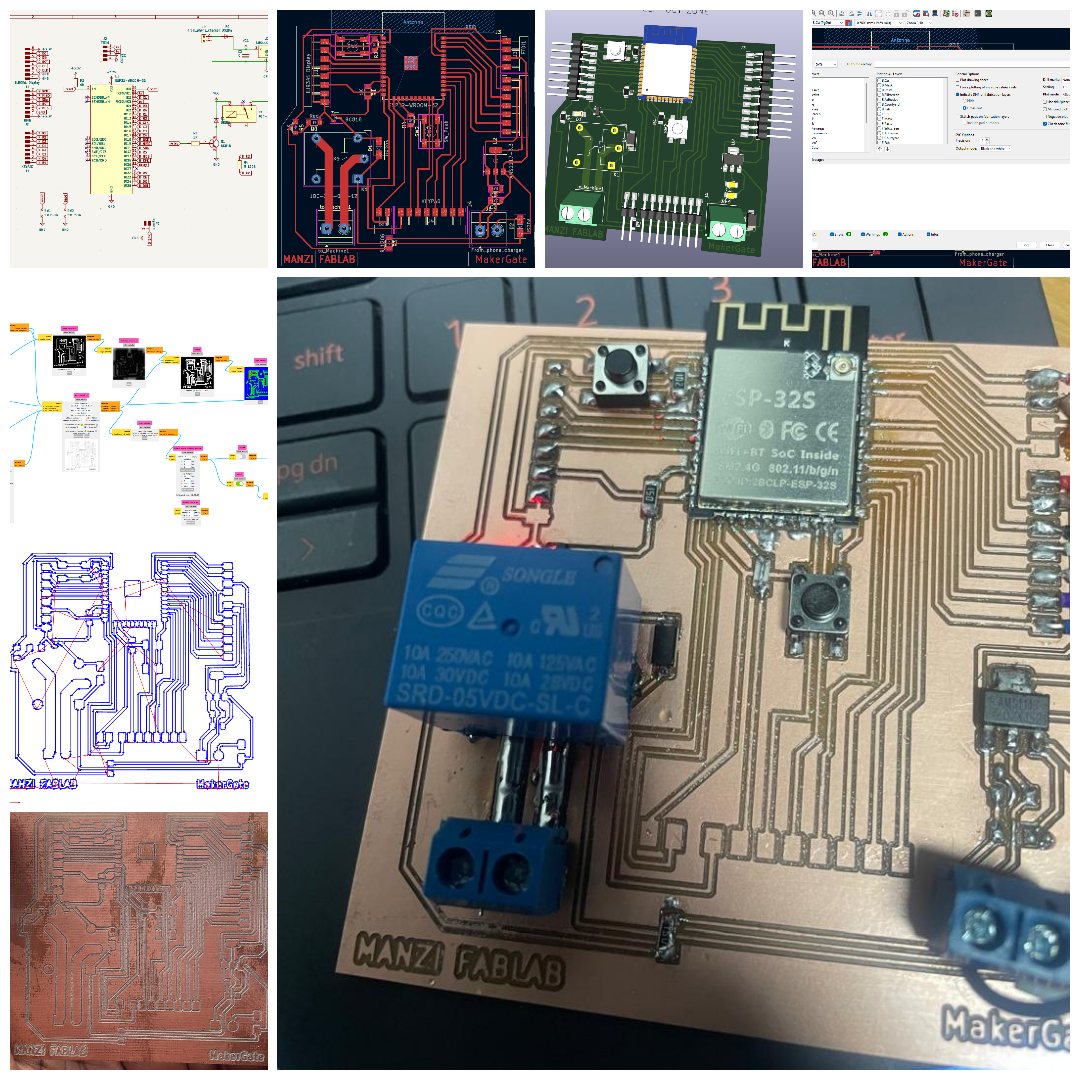
- laser cutting: for the enclosure as supstractive manufacturing Has to fit all my components and look professional

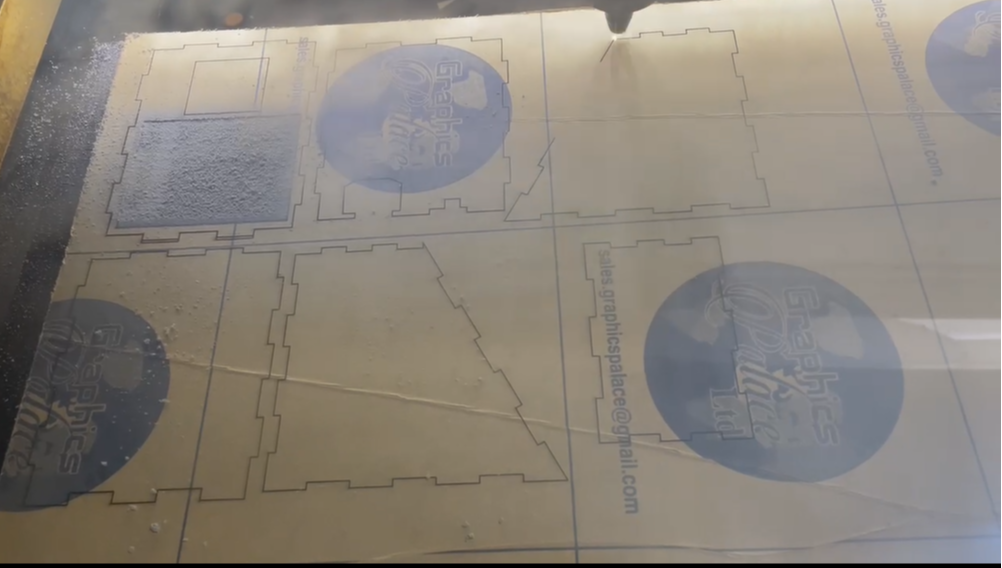
- 3D-printed as Addictive Manufacturing : Has to fit the rfid card and hold it near the device
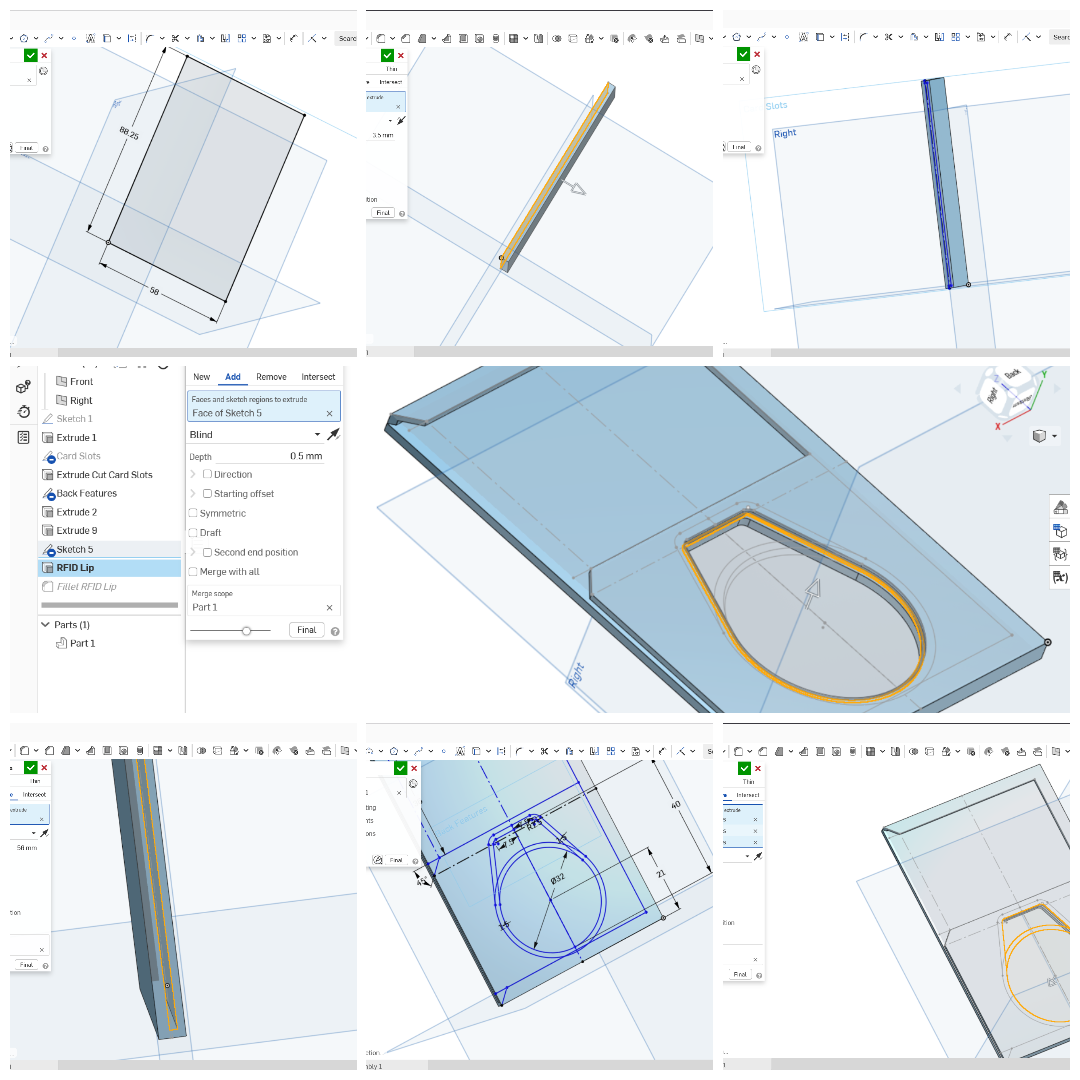
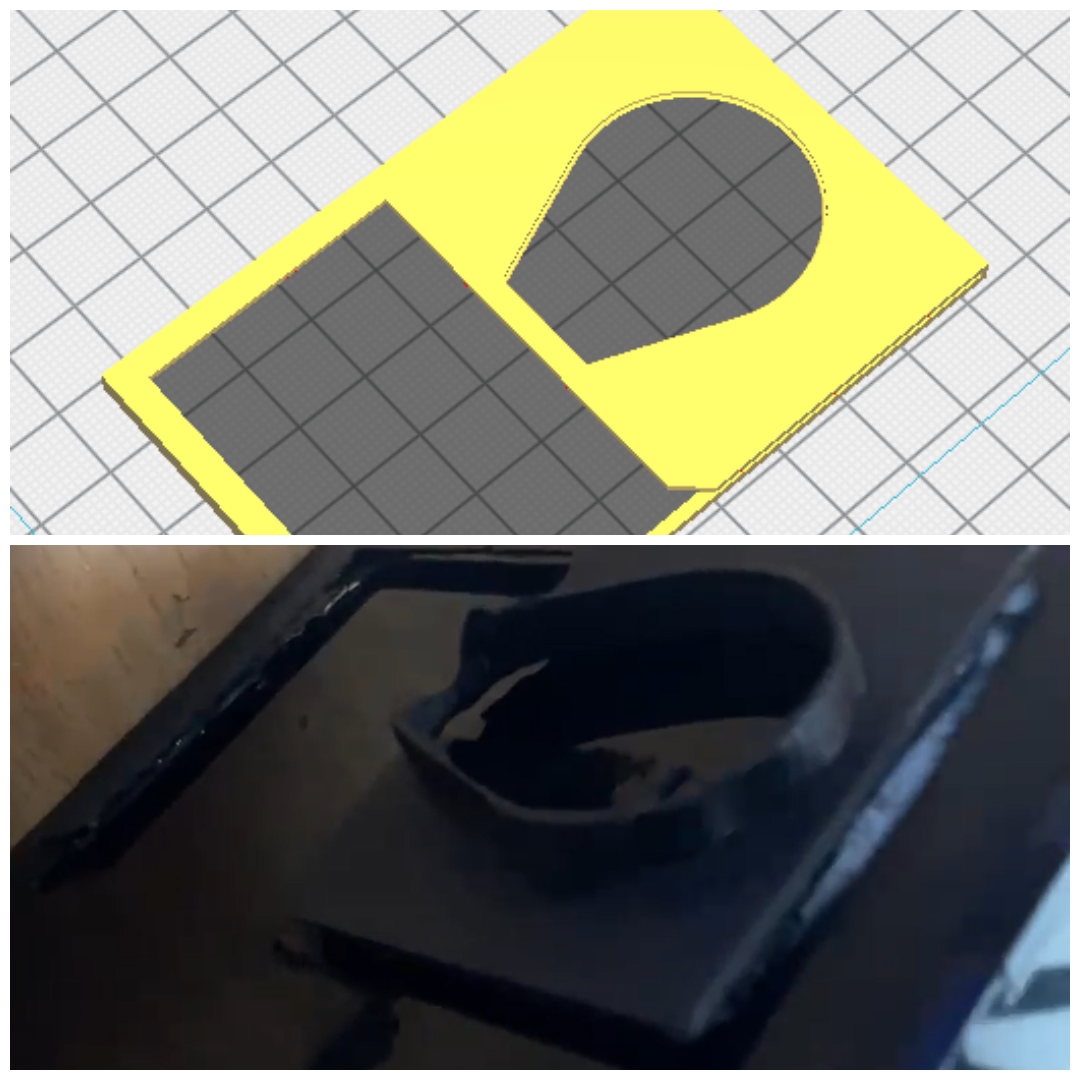
- User interface: The screens and menus that users will see plus the embedded management web platform
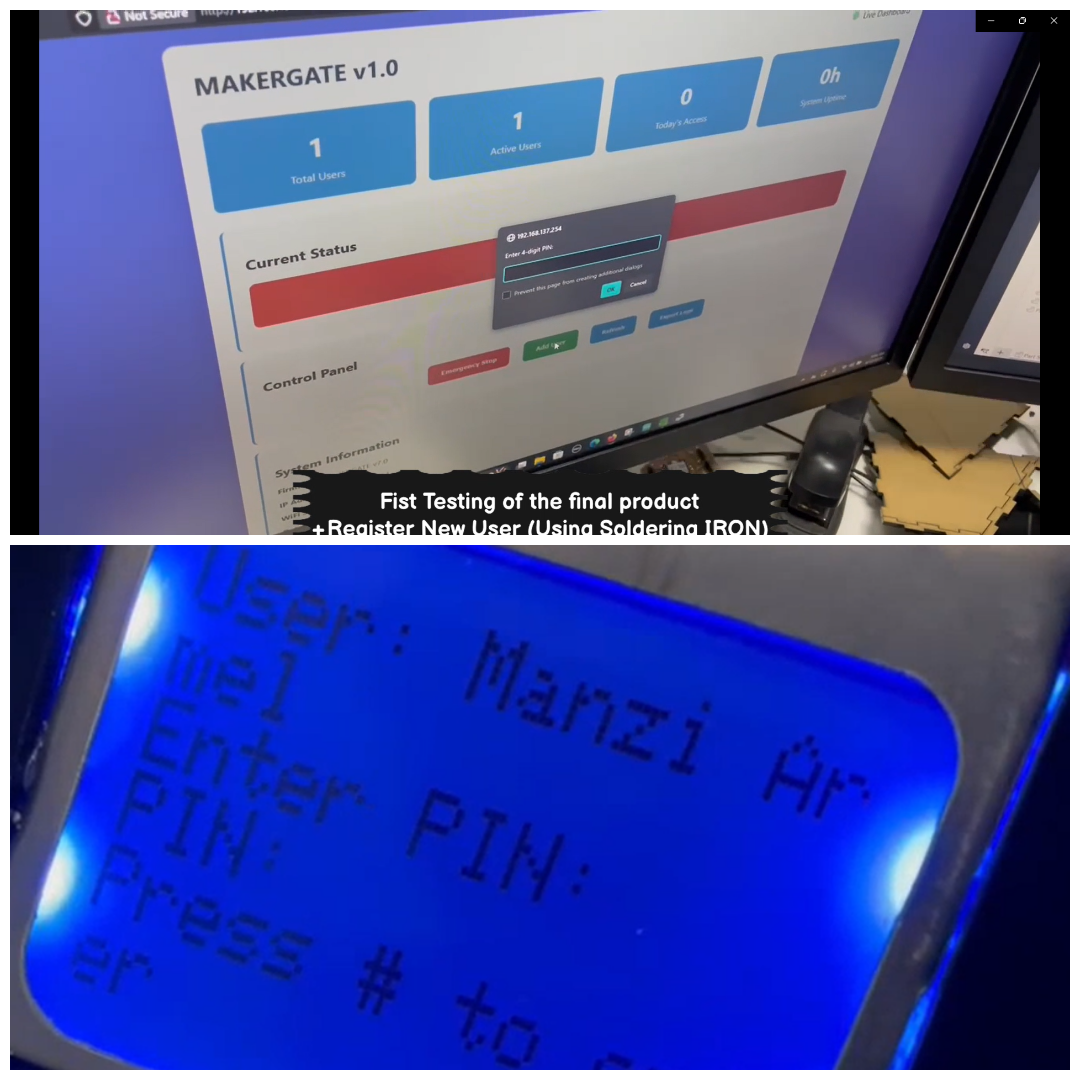
What components do I need to buy?
| Component | Specs | How Many | What it's for |
|---|---|---|---|
| ESP32-WROOM-32 | The brain with WiFi | 1 | Controls everything |
| MFRC522 RFID Module | 13.56MHz card reader | 1 | Reads user cards |
| Nokia 5110 LCD | 84x48 pixel display | 1 | Shows messages to users |
| 4x5 Matrix Keypad | Membrane buttons | 1 | PIN entry |
| Relay Module | 5V, handles 10A | 1 | Actually controls equipment power |
| Voltage Regulator | AMS1117-3.3V | 1 | Clean power for sensitive components |
| Capacitors | 100μF and 10μF | 2 | Smooth out power noise |
| Resistors | 1kΩ and 1.2kΩ | 2 | Current limiting and pull-ups |
| PCB Material | FR4, standard thickness | 1 | Circuit board substrate |
| PLA Filament | For 3D printing | 100g | Making the enclosure |
Where can I get all this stuff?
My shopping list (with actual sources):
- Electronics Components: Nyereka Tech - they're local and have most of what I need
- 3D Printing Material: Also from Nyereka Tech - convenient to get everything from one place
How much is this going to cost me?
| What I'm buying | Price each | How many | Total |
|---|---|---|---|
| ESP32-WROOM-32 | Fr8,000.00 | 1 | Fr8,000.00 |
| MFRC522 RFID Module | Fr6,500.00 | 1 | Fr6,500.00 |
| Nokia 5110 LCD | Fr4,000.00 | 1 | Fr4,000.00 |
| 4x5 Keypad | Fr3,000.00 | 1 | Fr3,000.00 |
| Relay Module | Fr2,500.00 | 1 | Fr2,500.00 |
| Small electronic parts | Fr5,500.00 | 1 kit | Fr5,500.00 |
| Miscellaneous stuff | Fr10,000.00 | various | Fr10,000.00 |
| Total I need to spend | Fr39,500 |
What am I making vs. buying?
DIY vs. off-the-shelf breakdown:
- Custom PCB: Designing and milling my own circuit board
- Enclosure: 3D printing a custom case that fits everything perfectly
- Software: Writing all the Arduino code myself
- Instructions: Making my own user manual
How am I actually going to build this?
My construction plan:
- PCB Design: Use KiCad (free and does everything I need)
- 3D Modeling: Blender for the case design
- 3D Printing: Our lab's printer with PLA
- Assembly: Hand soldering (I've gotten pretty good at this)
- Programming: Arduino IDE (what I'm used to)
- Testing: Lots of manual testing and some automated checks
- Quality Check: Test every single function before calling it done
What do I still need to figure out?
My remaining questions (the tricky stuff):
- How reliable is RFID reading in our dusty workshop environment?
- What happens if the WiFi goes down but people still need access?
- Do I need any special electrical certifications for controlling power?
- How can I make this work for different types of equipment?
- What's the best way to make the interface foolproof?
How will I know if it actually works?
My testing plan (how I'll prove it works):
- Basic functionality: Does it read cards, accept PINs, and control power?
- Security testing: Can I trick it into giving unauthorized access?
- User experience: Is it actually easy to use or frustrating?
- Reliability: Can it run for 24 hours without crashing?
- Safety check: Does it fail safely if something goes wrong?
- Performance: How fast does it respond? How much power does it use?
- Cost check: Did I stay under budget compared to commercial options?
- Real-world test: Can it handle different types of equipment?
- User feedback: What do actual lab users think of it?
How I'll know if I succeeded
My success criteria (specific targets):
- System stays running 99% of the time during testing
- Responds to cards and PINs in under 2 seconds
- Never gives access to unauthorized users (zero false positives)
- Total cost stays under $50 per unit
- Users rate it at least 4.5 out of 5 for ease of use
- Successfully controls at least 3 different pieces of equipment
Personal reflection: Planning everything out like this made me realize how much work is still ahead of me, but also made me more confident that this is actually doable. The hardest part will probably be making sure it's reliable enough for daily use in our lab. I don't want to build something that works once and then breaks!
The timeline is getting tight, but I think if I focus on the core functionality first and add fancy features later, I can make this work. The key is getting the basic security and power control working rock-solid before worrying about the web interface and logging features.
System integrated and fully packaged.
